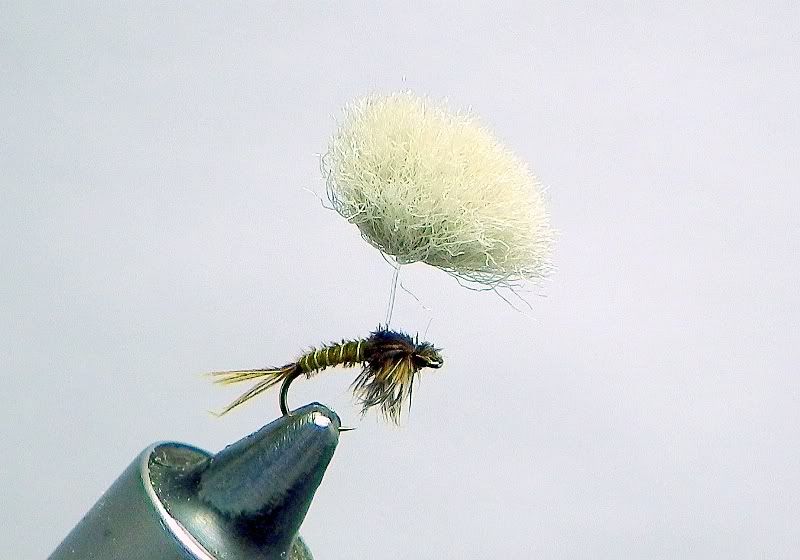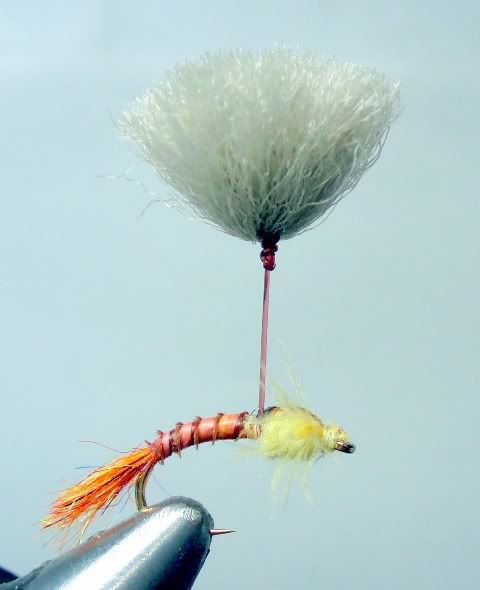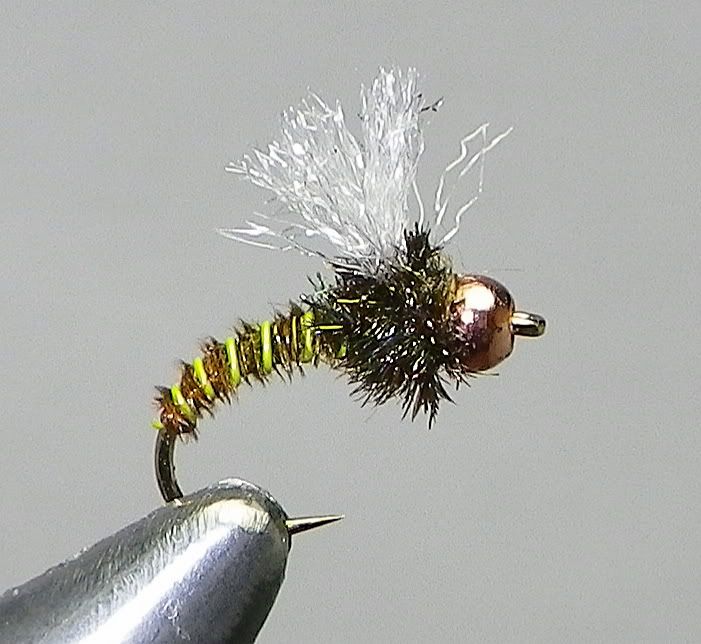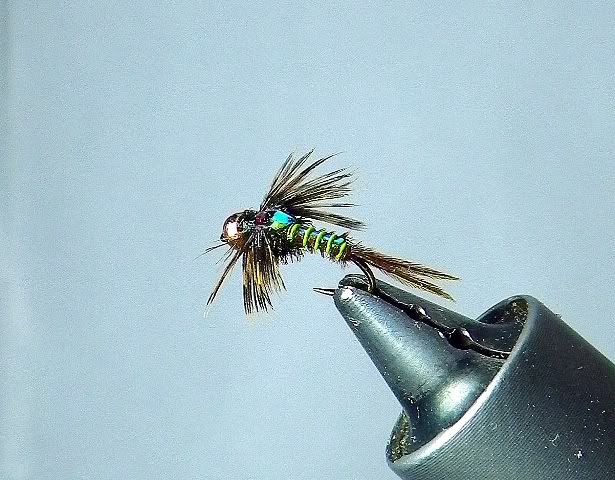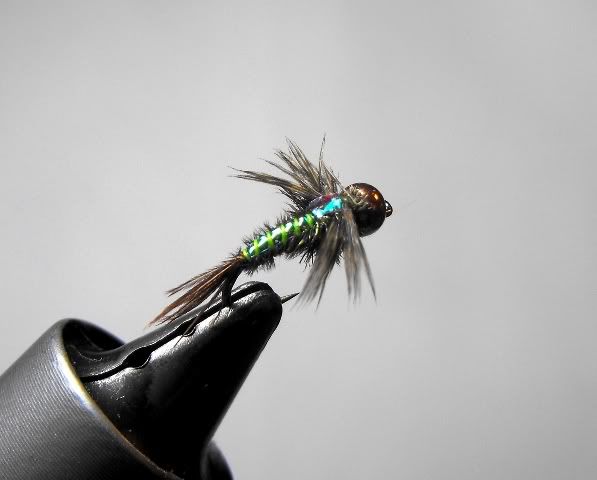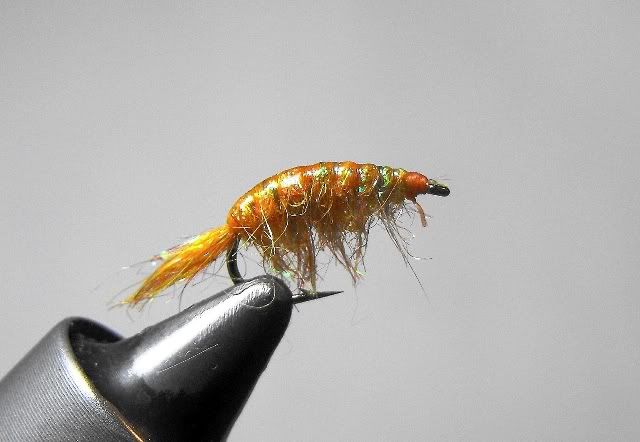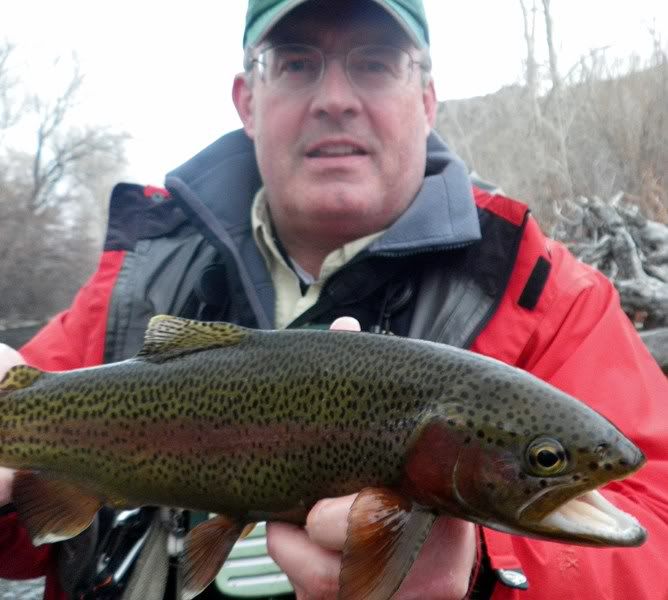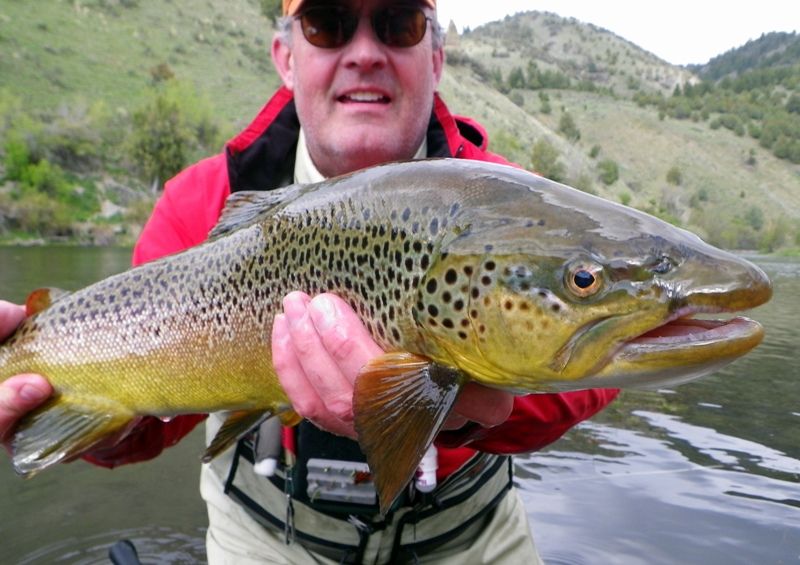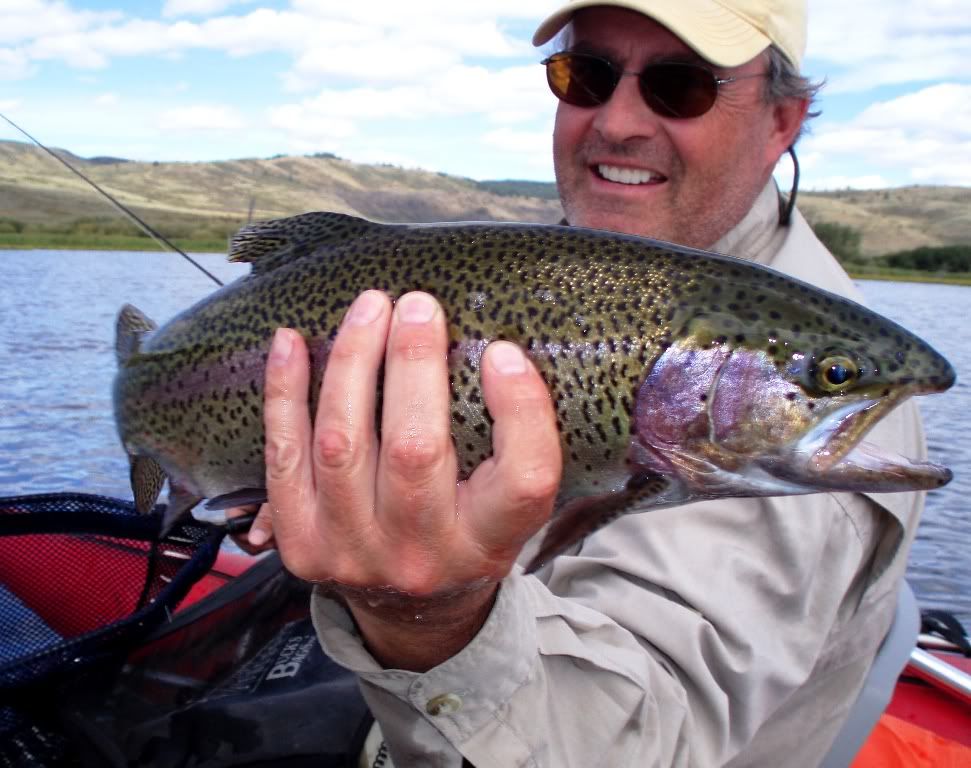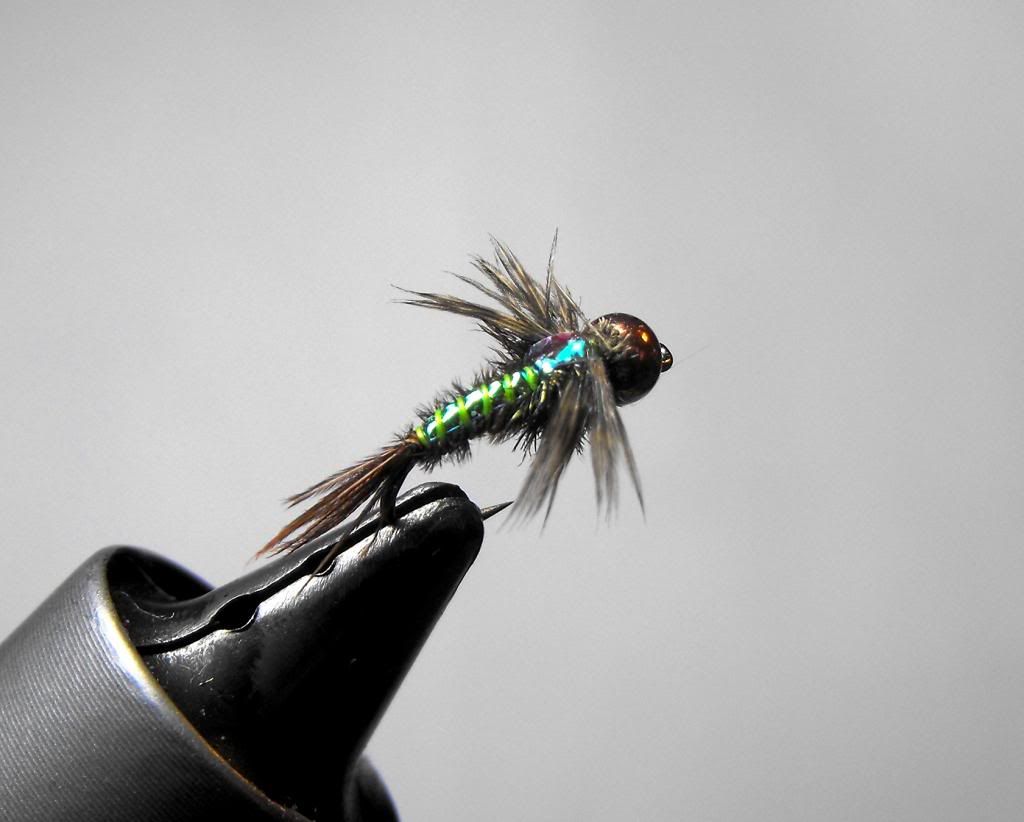rccola, thanks for the interest. I hate to hijack this thread, but since it was a question about parasols, perhaps I'll be forgiven.
I tie parasols in a variety of patterns. As far as a percentage that is not a question I can answer. I tie a lot and most of what I tie is for what I fish for and where I fish. I fish mainly to trout in local rivers, smaller streams, spring creeks and stillwaters. When I tie parasols, they are usually for use with how I fish my favorite spring creek with the Parasol Emerger acting as a slow water indicator and not necessarily to catch fish with.
Your comment about not wanting to waste your time on the surface with a parasol fly when the fish are feeding deeper is exactly the situation I encountered on the spring creek which led to the use of the parasol as an indicator.
After discovering the spring not far from my home I started fishing it often. The more I fished it, the more its secrets began unfolding and I was able to catch more fish on a consistent basis. One of the biggest problems was that normally the fish were holding just above the weeds at the bottom of the spring with sporadic rises to the surface. A regular tight-line nymph rig would foul quickly in the weeds. An indicator rig with either a large buoyant dry fly or an indicator such as a Thingamabobber would spook the fish every time when it hit the surface of the normally flat and calm slow-moving water.
I had started using the parasol as an indicator while fishing Utah's Green River and Provo River. Although these are larger rivers I found spooky trout that would feed at leisure along the edges in calmer water. The parasol as an indicator fly would usually not spook these trout when landing upon the water and I was able to run an offering right in front of their noses without spooking them.
I figured the same reasoning could work on the spring and soon found out the theory was correct. This method is the same one I use today on the spring as well as countless other waters.
I have a favorite small stillwater I fish here in southeast Idaho and I use the parasol as a visual point for my tired eyes when fishing to "gulping" trout as the feed on the surface for various mayflies and caddis species found in the water. I trail an emerger imitation or a spinner mayfly imitation (when called for) behind the parasol. because the emergers or spinners are so difficult for my older eyes, the parasol gives me a visual point that I can see and track, knowing that my emerger or spinner imitation is close in the vicinity. The beauty of this method on stillwaters when trout are feeding is that they take the parasol imitation as often as they take the trailing fly.
As far as what patterns I tie below a parasol, this usually is tied to the time of year and what ever aquatic insect is hatching at the time I'm fishing the water. On my favorite spring creek I usually use a parasol tied in either a Pheasant-tail or PMD. On my favorite small stream that I fish in the fall, winter and spring, I tie the parasol in a midge or BWO as that is what is normally emerging on that water during those seasons. There are some places on the Henry's Fork that I will use a parasol in an emerging caddis.
I do fish parasols year 'round, and hopefully my explanation above tells you why its so effective. Again, I don't usually use the parasol as the fly of choice to catch fish, although they do this very effectively. By tying the parasols that I use in the patterns imitating emerging insects during the time I use them, the chances for catching and/or not spooking fish because its something they are used to seeing is increased.
Here are a couple of shots of fish caught on other waters besides the spring creek that fell for a suspended offering dropped under a Parasol Emerger:
Good luck with these. Hope I answered your questions.
Best Fishes,
Kelly.
---------- Post added at 12:30 PM ---------- Previous post was at 12:12 PM ----------
jaybo41, thanks for your question. After experimenting with several versions of the flashback bead-head Pheasant-tail nymph I settled on the one you see because the fish decided they liked it most on most of the waters that I fish. My fishing buddy, Buzz, tied on a copper bead-headed Pheasant-tail nymph for fishing our spring and we found the fish liked that version as an imitation of the PMD nymphs prevalent in the water, thus the experimentation. After several versions in different colors of pheasant tail, wire and beads, I settled on the one in the picture. I do vary between yellow-dyed pheasant tails and natural colored ones, with me and the fish leaning a little towards the yellow-dyed versions. I have tied them in red, with red wire and a variety of other wires and dyes but none have performed as well as the one pictured.
Here is the recipe:
KG's version of the bead-head, flashback Pheasant-tail nymph (look closely at the photo to see that the flashback goes in two parts from the tail to the bead on this fly):
Hook: DaiRiki 125 size 14-16
Thread: 8/0 Olive/Dun
Bead: Copper 3/32
Tail: 5-6 Pheasant-tail fibers natural or yellow-dyed
Rib: Chartreuse wire - small
Abdomen: Pheasant-tail fibers
Flashback: UTC Mirage - opal, med
Thorax: Peacock
Wingcase: UTC Mirage - opal, large
Legs: Brown-mottled Hen feather
Also notice that the legs are not clumps tied on either side of the fly, rather a hen feather tied on top under the flashback with feathers divided to either side and bound down by the flashback material. I will try to start another thread to display the method I use for the legs. They look more natural as well as giving the fly a more finished look.
Best Fishes,
Kelly.

